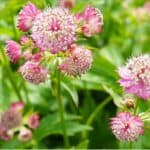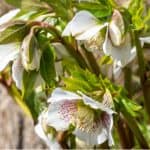Last updated on May 3rd, 2022
Our site is reader supported, this means we may earn a small commission from Amazon and other affiliates when you buy through links on our site.
Hellebores, commonly known as the Christmas Rose, produce a wonderful display of flowers and are perfect for providing winter interest when the availability of winter flowering plants is somewhat limited. They’re a great source of food for any pollinating insects at the beginning of spring, especially bees which need all the help they can get, and they are also popular because of the attractive evergreen foliage. This foliage is also, depending on the variety, sometimes silver or they have marbled leaves.
There are many different types out there that offer a range of flowers that come in shades of purple, pink, yellow, or white. Some varieties even have decorative spotting on the inside. There are plenty of varieties that are very easy to grow with bold foliage and need very little care. The Helleborus niger and Helleborus x hybridus (also known as Oriental hybrids) are the best-known variety but can be challenging to grow because of the amount of drainage that’s required in the winter. This can usually be overcome by following our steps on how to improve drainage here.
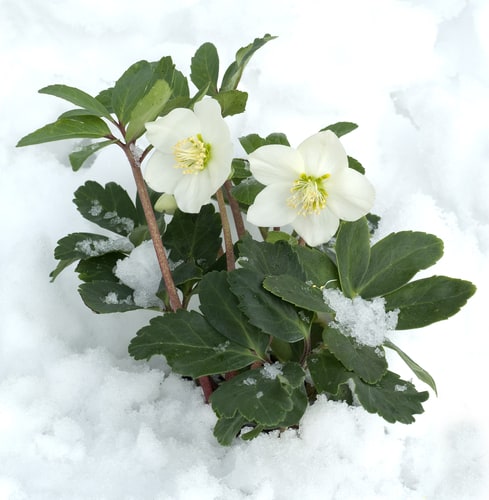
However, if you already have this variety and it’s doing quite well in your garden, you might want to consider propagating from the parent plant so that you can have multiple plants. You can give these newly propagated plants as gifts to your friends or simply fill other areas of your garden with these stunning perennials.
Hellebore propagation by dividing plants (as you can most perennials) and sowing seeds
There are two ways that you can propagate a Helleborus. The first is by dividing an existing plant, which is the easiest way and most instant in terms of results, and the second is by purchasing or collecting seeds from a plant you already have, which you can then sow.
If you don’t deadhead the Helleborus argutifolius, Helleborus foetidus, and Helleborus x hybridus, they will self-seed freely so we recommend deadheading the flowers as they finish if you want to avoid masses of Helleborus in your garden.
Dividing Helleborus
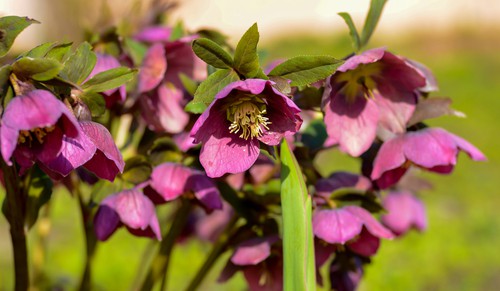
Most Hellebores can be propagated by division, as you can with most perennials. We actually recommend doing this in autumn, however, it can also be done in spring after flowering.
How to divide
Carefully dig around the plant you want to divide being careful to ensure you get as much as the root as possible. You can then divide this plant into 2 or 3 pieces. Each piece should have around 2-3 growing shoots at the top.
Carefully plant these new pieces in your desired positions, often planting in clumps can be effective.
Growing from seed
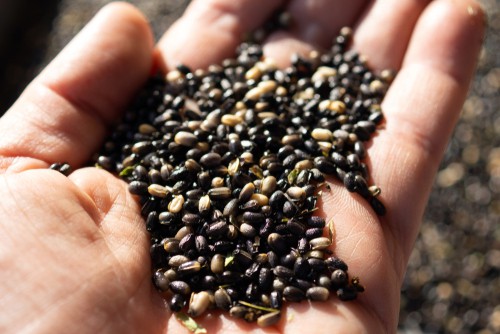
Collecting seeds
You are able to collect the seeds as soon as you see the seed pods are opening.
- To do this you want to collect the seeds on a day that’s otherwise dry as soon as the seed head opens. You might notice that the seed heads change colour right before they open so this will give you some indication as to when you should get prepared.
- Pick the seed head and lay them out on a dry, warm window sill or inside of an airing cupboard. This will help you to easily extract the seeds.
- You should be able to gently crush them and have them open if they aren’t already open.
- Collect the individual seeds, wash them and leave them out to dry on paper towels for a few days.
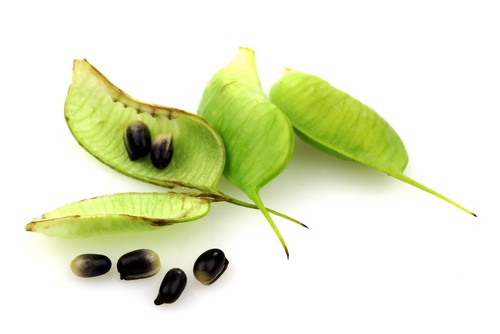
You should plant seeds immediately but storing seeds in the fridge can help to preserve them
It is best to sow new Hellebore seeds immediately because regular storage will reduce their viability and lower your success rate. However, you might need to store a surplus in which case you should:
- Place the dry seeds in a labelled individual packet or envelope that is airtight and has no moisture. You can even use calcium chloride materials or silica gel to keep all moisture out.
- Store them in the refrigerator at 5°C until you need them.
How to sow seeds
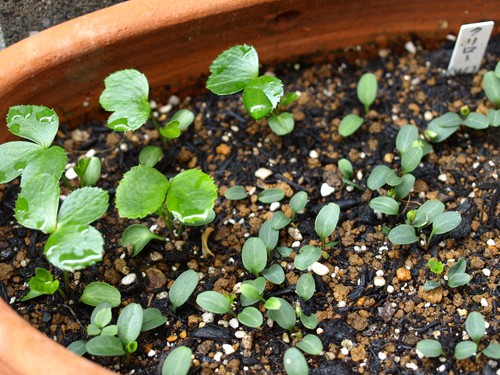
You should sow your seeds between the middle and end of summer, and do so outdoors. It can be very difficult to germinate seeds that get stored because they require warm periods followed by immediate cold periods. To do this successfully you need to keep the sown seeds at between 15°C and 18°C for 6 weeks and then directly expose them to winter cold, or otherwise keep them at around 5°C for 6 weeks.
It’s best to collect and germinate as many seeds as you can during the stage because the germination is often sporadic and it can take up to a full year to be successful.

